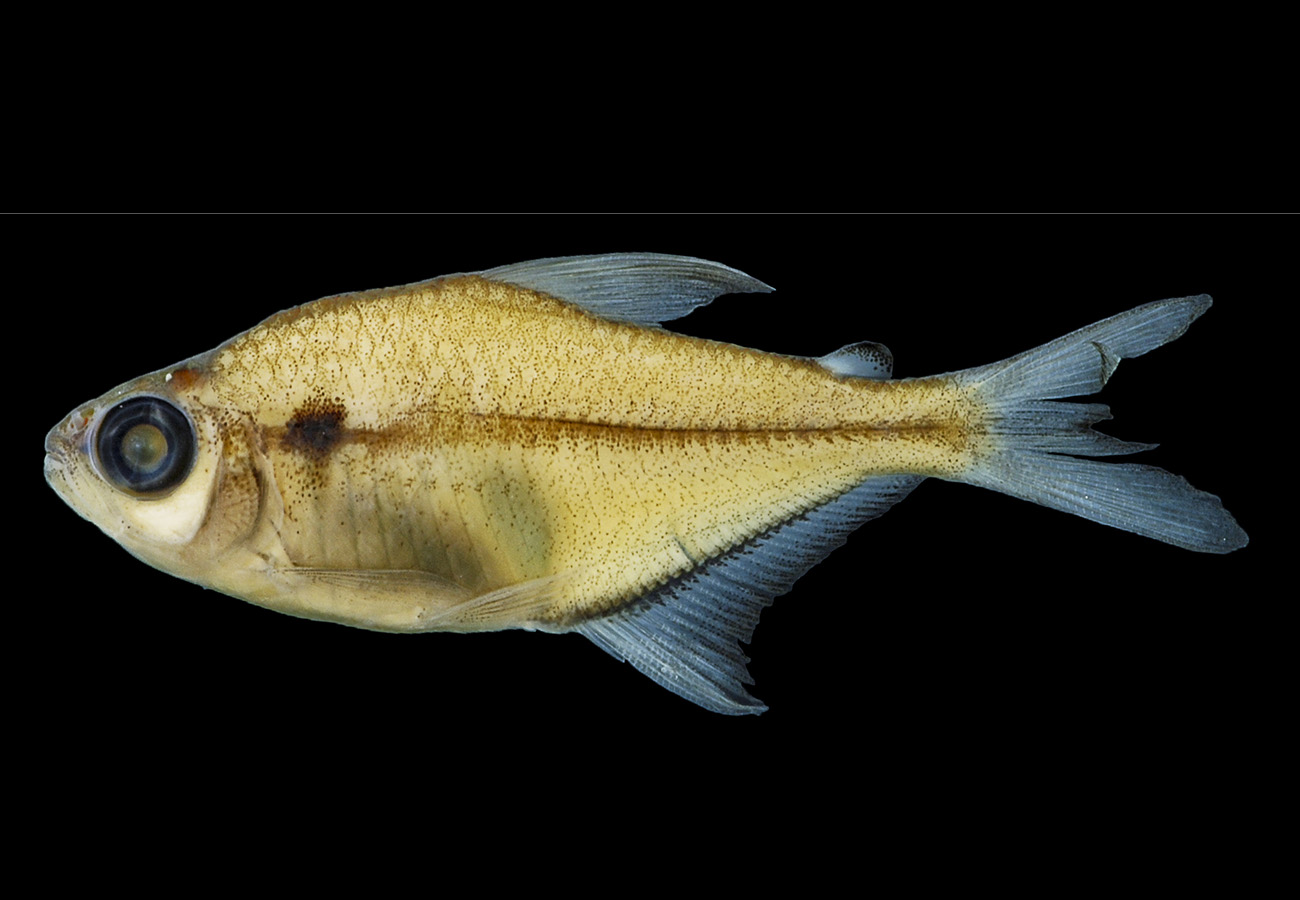Abstract
A new species of the genus Myolaimus is described from agricultural areas in the southeast of the Iberian Peninsula. Myolaimus ibericus sp. n. is characterized by its 560–783 μm long body in females and 526–731 μm in males, cuticle often appearing swollen and baggy, lateral field with one longitudinal wing, lip region with six amalgamated lips having ten (6 + 4) setiform papillae, stoma consisting of a wider anterior chamber (cheilo-gymnostom) and a tubular posterior part (stegostom) separated by a well developed dorsal tooth and two small, lateral (one right and another left) teeth, glottoid-like apparatus structure appearing at metastom, pharyngeal corpus 1.7–2.6 times the isthmus length, excretory pore and deirids located at metacorpus level, deirids pore-like in females and seta-like in males, female reproductive system monodelphic-prodelphic with antidromous ovary, post-uterine sac 1.7–2.7 times the corresponding body diameter long, V = 50–56, female rectum 1.3–2.0 times the anal body diameter long, female tail conical-elongate (54–70 μm, c = 9.9–13.1, c’ = 4.4–5.8) often enveloped by the baggy cuticle, male tail conoid (8–10 μm, c = 58.4–73.1, c’ = 1.1-1.4) and ventrally constricted at its middle, bursal structure with seven (4+1+2) pairs of genital papillae. This is the first record of the genus from the Iberian Peninsula. Description, measurements and illustrations, including SEM photographs are provided. An illustrated compendium of the posterior ends of males in Myolaimus species is also presented.
References
Abolafia, J. (2015a) A low-cost technique to manufacture a container to process meiofauna for scanning electron microscopy. Microscopy Research and Technique, 78, 771–776.
https://doi.org/10.1002/jemt.22538Abolafia, J. (2015b) Método portátil para extracción de nematodos. Monografías Bioespeleológicas, 10, 23–25.
Abolafia, J., Guerrero, P. & Peña-Santiago, R. (2011) Nematoda, Rhabditida. In: Fauna Iberica, vol. 34. Ramos, M. A. (coord.). Museo Nacional de Ciencias Naturales. CSIC, Madrid, 267 pp.
Abolafia, J. & Peña-Santiago, R. (2001) Rhabditid species (Nematoda, Rhabditida) recorded in peninsular Spain and Balearic islands. Graellsia, 57, 113–131.
https://doi.org/10.3989/graellsia.2001.v57.i1.299Ali, S.M., Farooqui, M.N. & Suryawanshi, M.V. (1971) Myolaimus indicus n. sp. (Rhabditida: Myolaimidae) and Metadorylaimus coomansi n. sp. (Dorylaimida: Tylencholaimidae) from Marathwada, India. Nematologica, 16, 577–583.
https://doi.org/10.1163/187529270X00793Andrássy, I. (1958) Szabadonélő fonálférgek (Nematoda libera). In the series: Magyarország állatvilága, 3. Kötot, 1, Nemathelminthes-Archipodiata. 1. Akadémiai Kiadó (Fauna Hungariae, 36), Budapest, 362 pp.Andrássy, I. (1959) Weitere Nematoden aus der Tropfsteinhöhle "Baradla". Acta Zoologica, Budapest, 5, 1–6.
Andrássy, I. (1984) Klasse Nematoda (Ordnungen Monhysterida, Desmoscolecida, Araeolaimida, Chromadorida, Rhabditida). Bestimmungsbücher zur Bodenfauna Europas, No. 9. Berlin, Deutschland, Akademie Verlag, 509 pp.
Andrássy, I. (1996) Nematológiai kutatások a Balatonon. Állattani Közlemények, 81, 169–175.
Andrássy, I. (2005) Free-living nematodes of Hungary (Nematoda errantia). Volume 1. In the series: C. Csuzdi and S. Mahunka (eds.). Pedozoologica Hungarica, No. 3. Hungarian Natural History Museum, Budapest, 518 pp.
Bärmann, E.V., Fürst von Lieven, A. & Sudhaus, W. (2009) Revision and phylogeny of Myolaimus Cobb, 1920 (Secernentea, Nematoda) with the description of four new species. Journal of Nematode Morphology and Systematics, 12, 145–168.
Cobb, N.A. (1920) One hundred new nemas. (Type species of 100 new genera.) Contributions to a Science of Nematology, 9, 217–343.
De Ley, P., van de Velde, M.C., Mounport, D., Baujard, P. & Coomans, A. (1995) Ultrastructure of the stoma in Cephalobidae, Panagrolaimidae and Rhaditidae, with a proposal for a revised stoma terminology in Rhabditida (Nematoda). Nematologica, 41, 153–182.
https://doi.org/10.1163/003925995X00143Giblin-Davis, R.M., Kanzaki, N., De Ley, P., Williams, D.S., Schierenberg, E., Ragsdale, E.J., Zeng, Y. & Center, B.J. (2010) Ultrastructure and life history of Myolaimus byersi n. sp. (Myolaimina: Myolaimidae), a phoretic associate of the crane fly, Limonia schwarzi (Alexander) (Limoniidae), in Florida. Nematology, 12, 519–542.
https://doi.org/10.1163/138855409X12519673803912Goodey, T. (1929) On some new and little-known free-living nematodes. Journal of Helminthology, 7, 27–62.
http://dx.doi.org/10.1017/S0022149X0001871XGoodey, T. (1963) Soil and freshwater nematodes. 2nd edition. Rewritten by J. B. Goodey. Methuen & Co. London, 544 pp.
Hirschmann, H. (1952) Die Nematoden der Wassergrenze mittelfränkischer Gewässer. Zoologische Jahrbücher (Systematik), 81, 313–407.
Hnatewytsch, B. (1929) Die Fauna der Erzgruben von Schneeberg im Erzgebirge. Zoologische Jahrbücher (Systematik), 56, 173–268.
Holovachov, O. & Boström, S. (2006) Description of Deleyia gen. n. with a discussion of its phylogenetic relationships to the genera Daubaylia Chitwood & Chitwood, 1934 and Myolaimus Cobb, 1920 (Nematoda: Rhabditida). Nematology, 8, 223–233.
https://doi.org/10.1163/156854106777998773Loof, P.A.A. (1964) Free-living and plant-parasitic nematodes from Venezuela. Nematologica, 10, 201–300.
https://doi.org/10.1163/187529264X00042de Man, J.G. (1876) Onderzoekingen over vrij in de aarde levende Nematoden. Tijdschrift der Nederlandsche Dierkundige Vereeniging, 2, 78–196.
Meyl, A.H. (1954) Die bisher in Italien gefundenen freilebenden Erd und Süsswasser-Nematoden. Archivio Zoologico Italiano, 39, 161–264.
Paesler, F. (1956) Beitrag zur Erweiterung der Kenntnis der Gattung "Myolaimus". Zoologischer Anzeiger, 157, 223–231.
Rahm, G. (1924) Beitrag zur Kenntnis der Moostierwelt der preussischen Rheinlande. I. Systematisch beschrelbender Teil. Archiv für Naturgeschichte, Berlin, 90, 153–214.
Rahm, G. (1928) Alguns nematodes parasitas e semi-parasitas das plantas culturaes do Brasil. Archivos do Instituto de Biologia e Defesa Agricola e Animal, 1, 239–252.
Rahm, G. (1929) Nematodes parasitas e semi-parasitas de diversas plantas culturaes do Brasil. Archivos do Instituto Biologico de Defesa Agricola e Animal, 2, 67–136.
Sanwal, K.C. (1960) Macrolaimus canadensis n. sp. (Nematoda: Panagrolaiminae), from the frass of the bark beetle Phloeosinus canadensis Swaine, 1917, with remarks on other species of the genus Macrolaimus Maupas, 1900. Canadian Journal of Zoology, 38, 1127–1131.
https://doi.org/10.1139/z60-117Schuurmans Stekhoven, J.H. & Teunissen, R.J.H. (1938) Nématodes libres terrestres. In: Exploration du Parc National Albert, Mission G. F. de Witte (1933–1935), 22, 1–229.
Siddiqi, M.R. (1964) Studies on Discolaimus spp. (Nematoda: Dorylaimidae) from India. Zeitschrift für Zoologische Systematik und Evolutionsforschung, 2, 174–184.
https://doi.org/10.1111/j.1439-0469.1964.tb00720.xSudhaus, W. (1977) Rhabditis dimorpha: Ein Beispiel für unvollständige Häutung und Sexualdimorphismus bei Nematoden. Zoologischer Anzeiger, 199, 325–352.
Sufyan, N., Mahamood, M., Singh, G.K. & Ahmad, I. (2014) Description of Diplolaimelloides rushikondai sp. n. (Monhysteridae: Nematoda) and first report of the males of Myolaimus indicus (Myolaimidae: Nematoda) from India. International Journal of Nematology, 24, 141–148.
Weingärtner, I. (1953) Die Nematoden des Kompostes. Sitzungsberichte der Physikalisch-medizinischen Sozietät zu Erlangen, 76, 86–107.

